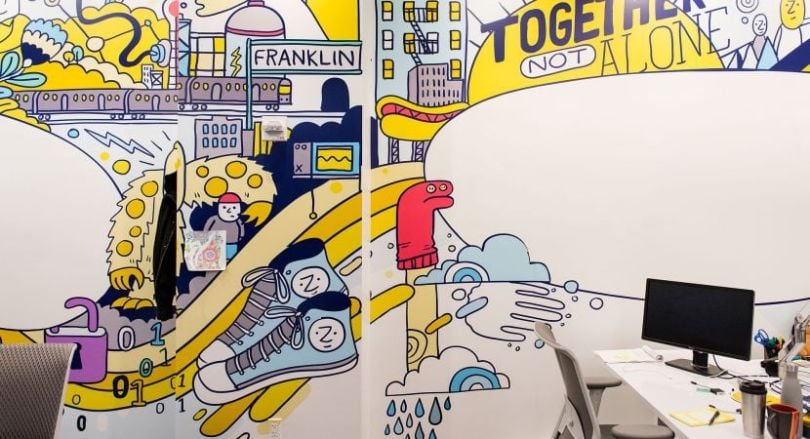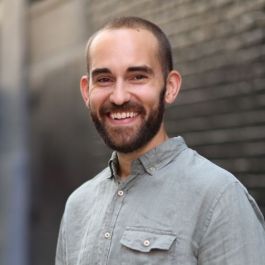For more than 15 years, Zocdoc has been breaking down barriers to access within the often-opaque healthcare system — and it’s built a culture of transparency for its employees, too.
As its team members have created and scaled the provider marketplace that today serves millions of patients every month, they’ve remained focused on sharing ideas freely, building strong personal relationships and working together toward common goals.
“I’ve seen Zocdoc nearly double in size during my tenure, and I am happy to say it still feels like the small, connected and collaborative company I joined years ago,” said Recruiting Manager Barry Habusta.
Central to this achievement are the processes it has put in place along the way, from public communication channels to weekly “3x3” reports from leaders detailing three successes and three opportunities for improvement on their respective projects.
“In the past, you could rely on quick conversations in the hallway or chat messaging. Now that we have more business units, more key stakeholders and larger scopes, we need to ensure everyone is on the same page,” said Senior Software Engineer Julian Massarani.
While he acknowledged that it can be nerve-wracking for a new hire to pose a question in an open Slack channel rather than ask a colleague directly, he’s seen how teams can benefit overall. People can learn from one another, get up to speed quickly and see their questions and opinions as important enough to share with the group.
Leaders are likewise forthcoming about their work, and at weekly companywide meetings, employees can voice feedback and concerns during an open question-and-answer period.
“If there are recurring issues or themes bubbling to the top, that is a good indicator that something needs to be addressed or is not working,” said VP of Product Marketing Laura Hood.
Every change the company makes is carefully considered: Zocdoc pushes employees to always question if there is a better, faster way but also encourages them to recognize when a shift is necessary and when it is not.
“Sometimes changing current processes isn’t worth the effort,” Hood added. “There may be more important priorities, or it may just not be the right time.”
When it is a worthwhile investment, employees tend to be more receptive to change because their voices are also valued. To reinforce this idea, the company also sends out annual engagement surveys, or “temperature checks,” to gauge how employees feel about the company’s performance in areas like collaboration.
WHAT ZOCDOC DOES
People use Zocdoc’s platform as their go-to resource for finding in-network doctors with reviews from real patients, booking healthcare appointments online, getting reminders for preventative check-ups and more. Through these experiences, Zocdoc is putting patients at the center and building a better healthcare industry.
Listening to — and Learning from — Fresh Perspectives
When teams work together across functions, it’s inevitable that differences will arise. Seeing these moments as opportunities for growth and improvement rather than contention is a cornerstone of Zocdoc’s success.
Massarani recalled a time when he was working on a new ads platform and encountering a discrepancy between tech’s “ship it whenever it's ready” philosophy and account managers’ emphasis on managing client expectations and workflows. Ultimately, he said, tech agreed that the best decision was to adjust its processes by adding a buffer period to release deadlines, which ensured unforeseen issues wouldn’t impact clients.
“Through open communication and collaboration, I've learned to appreciate diverse viewpoints and adapt my approach, leading to more effective teamwork and goal achievement,” he said.
“Through open communication and collaboration, I've learned to appreciate diverse viewpoints and adapt my approach, leading to more effective teamwork and goal achievement.”
In recruiting, nearly every team in the organization is or will be a partner at some point, so Habusta is deliberate about scheduling meetings with those that pique his interest. When that happens, he said, “I set up one-on-one time with them to better understand how they operate and explore if there are any learnings that I can take back to recruiting.”
Recently, as recruiting began to take on more branding and project work, he met with the company’s communications and project management teams and adopted some of their processes and frameworks. From their conversations, he said, he learned the importance of setting multiple deadlines throughout the project lifecycle to stay on track and ensure team members were prioritizing the work.

Pivoting Priorities
Zocdoc added urgent care centers to its platform in May, onboarding more than 200 locations in 22 states. Urgent care is one of the fastest-growing categories on the marketplace among both patients and providers, so the project was a top focus for the company’s patient verticals business unit, but the team needed extensive support to ensure a successful launch.
As a leader on the search team, Massarani was there to help.
“Initially, we planned to have a verticals team member spend a few weeks ramping up and implementing the search portion [of the product],” he recalled. “While this would have required less involvement from my team, it would have taken longer, and we would not have been able to ship the feature on time. Instead, I reprioritized my time across projects, pausing a less-urgent project to support the launch of urgent care. While this caused a small delay in my initial project and sacrificed a team deadline, my team was supportive, given my work contributed to the broader success of Zocdoc.
“Hitting goals is great,” he continued, “but sometimes we need to make a tradeoff to miss a team goal in service of making a larger impact toward a broader company goal.”
GET INVOLVED
Zocdoc offers a range of employee resource groups, including ZocPride, ZocColor and Women in Tech. According to Habusta, joining an ERG is “one of the best ways to get to know people from across the business and build lasting relationships that often go beyond one’s immediate team or tenure at Zocdoc.”
When employees participate in and contribute to the company culture, everyone wins. “I’m proud to say that four of our recruiting team members lead ERGs today, and I’ve witnessed all four of them grow professionally and personally from this experience,” he added.
Zocdoc offers a range of employee resource groups, including ZocPride, ZocColor and Women in Tech. According to Habusta, joining an ERG is “one of the best ways to get to know people from across the business and build lasting relationships that often go beyond one’s immediate team or tenure at Zocdoc.”
When employees participate in and contribute to the company culture, everyone wins. “I’m proud to say that four of our recruiting team members lead ERGs today, and I’ve witnessed all four of them grow professionally and personally from this experience,” he added.
Aligning Early and Often
In many cases, collaboration starts before a project has even begun. When Hood’s team is exploring new product opportunities, for example, they may run executive stakeholder interviews as part of the discovery phase.
“It’s a chance to gather intel from leaders at Zocdoc who oversee different parts of the business, and it allows us to hear their perspectives on what they believe the opportunities to be so we can further explore them,” she explained.
These interviews set the stage for more fruitful conversations later on since the product marketing team understands each party’s viewpoints and priorities from the outset and can facilitate more productive discussions.
Massarani has also seen firsthand the advantages of looping in all relevant parties to a project in its earliest stages.
“In the past, our philosophy was to fully flesh out ideas and designs before pulling in engineering and analysts until it came time for implementation,” he said. This approach sacrificed diverse perspectives and opinions, though, including many that could have informed the initial process.
“By pulling engineers into the planning process earlier,” he continued, “we address a wider range of questions and prevent large late-stage reworks of the projects, which increases our velocity overall.”
“By pulling engineers into the planning process earlier, we address a wider range of questions and prevent large late-stage reworks, which increases our velocity overall.”
Involving employees at all levels early on is good for morale, productivity and engagement — and ultimately for the company.
“When individual contributors are part of the decision-making process, they feel valued and motivated, and the team is overall happier,” said Massarani. “I firmly believe that people do their best work and enjoy it more when they have influence in decision-making and are motivated by the direction of company projects.”








